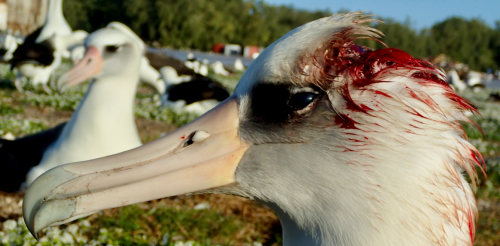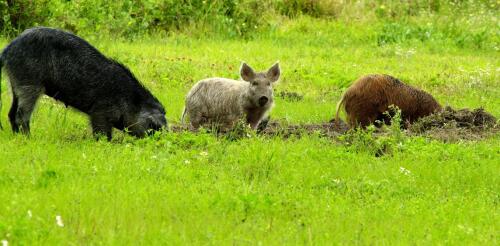Ecology
“Dune,” widely considered one of the best sci-fi novels of all time, continues to influence how writers, artists and inventors envision the future. Of course, there are Denis Villeneuve’s visually stunning films, “Dune: Part One” (2021) and “Dune: Part Two” (2024). But Frank Herbert’s masterpiece also helped Afrofuturist novelist Octavia Butler imagine a future of conflict amid environmental catastrophe; it inspired Elon Musk to build SpaceX and Tesla and push humanity toward the stars and a greener future; and it’s hard not to see parallels in George Lucas’ “Star Wars” franchise, especially their fascination with desert planets and giant worms. And yet when Herbert sat down in 1963 to start writing “Dune,” he wasn’t thinking about how to leave Earth behind. He was thinking about how to save it. Herbert wanted to tell a story about the environmental crisis on our own planet, a world dr...
Strong winds spread the largest wildfire in Texas history across more than 1 million acres of rangeland in the Panhandle, the heart of the state’s cattle-producing region, and into Oklahoma in late February 2024. Light precipitation on Feb. 29 helped firefighters as they tried to contain the Smokehouse Creek Fire and other blazes threatening homes and livestock, but the heat and winds picked up again on March 2. At least two people died and scores of structures, including homes, burned. Karen Hickman, a grassland ecologist at Oklahoma State University and president of the Society for Range Management, explained why the fires spread so fast, the risks to livestock and how quickly these ecosystems can recover. How did the fires spread so far so quickly? This region of Texas and Oklahoma is mostly rangeland where cattle graze. A combination of higher-than-average temperatures and low humidity had dried out the dormant plants. When the winds picked up following a couple of ho...
At the far end of the Northwestern Hawaiian Islands lies Kuaihelani – also known as Midway Atoll – a small set of islands home to the world’s largest albatross colony. Over a million albatrosses return to Kuaihelani each year to breed. These seemingly pristine islands appear safe, but there’s a predator lurking among the seabirds. House mice (Mus musculus) — the same kind that may be in your residence — have started to attack and kill albatrosses, eating them alive as they sit on their nests. I’m an ecologist who’s been studying the mystery behind these murderous mice. A predator hiding in plain sight Once the site of intense warfare during World War II, Kuaihelani is now a national wildlife refuge. Without predators such as cats, rats or mongooses, Kuaihelani provides a safe haven for millions of nesting and migratory birds, including mōlī (Phoebastria immutabilis), also known as Laysan albatrosses. These seabirds, e...
They go by many names – pigs, hogs, swine, razorbacks – but whatever you call them, wild pigs (Sus scrofa) are one of the most damaging invasive species in North America. They cause millions of dollars in crop damage yearly and harbor dozens of pathogens that threaten humans and pets, as well as meat production systems. Although wild pigs have been present in North America for centuries, their populations have rapidly expanded over the past several decades. Recent studies estimate that since the 1980s the wild pig population in the United States has nearly tripled and expanded from 18 to 35 states. More recently, they have spread rapidly across Canada, and these populations are threatening to invade the U.S. from the north. The wild pigs in Canada are unique because they were originally crossbred by humans to be larger and more cold-hardy than their feral cousins to the south. This suite of traits has earned them the name “super pigs” for good reason. Adu...
Human-driven climate change is increasingly shaping the Earth’s living environments. Rising temperatures, rapid shifts in rainfall and seasonality, and ocean acidification are presenting altered environments to many animal species. How do animals adjust to these new, often extreme, conditions? Animal nervous systems play a central role in both enabling and limiting how they respond to changing climates. Two of my main research interests as a biologist and neuroscientist involve understanding how animals accommodate temperature extremes and identifying the forces that shape the structure and function of animal nervous systems, especially brains. The intersection of these interests led me to explore the effects of climate on nervous systems and how animals will likely respond to rapidly shifting environments. All major functions of the nervous system – sense detection, mental processing and behavior direction – are critical. They allow animals to navigate their e...



